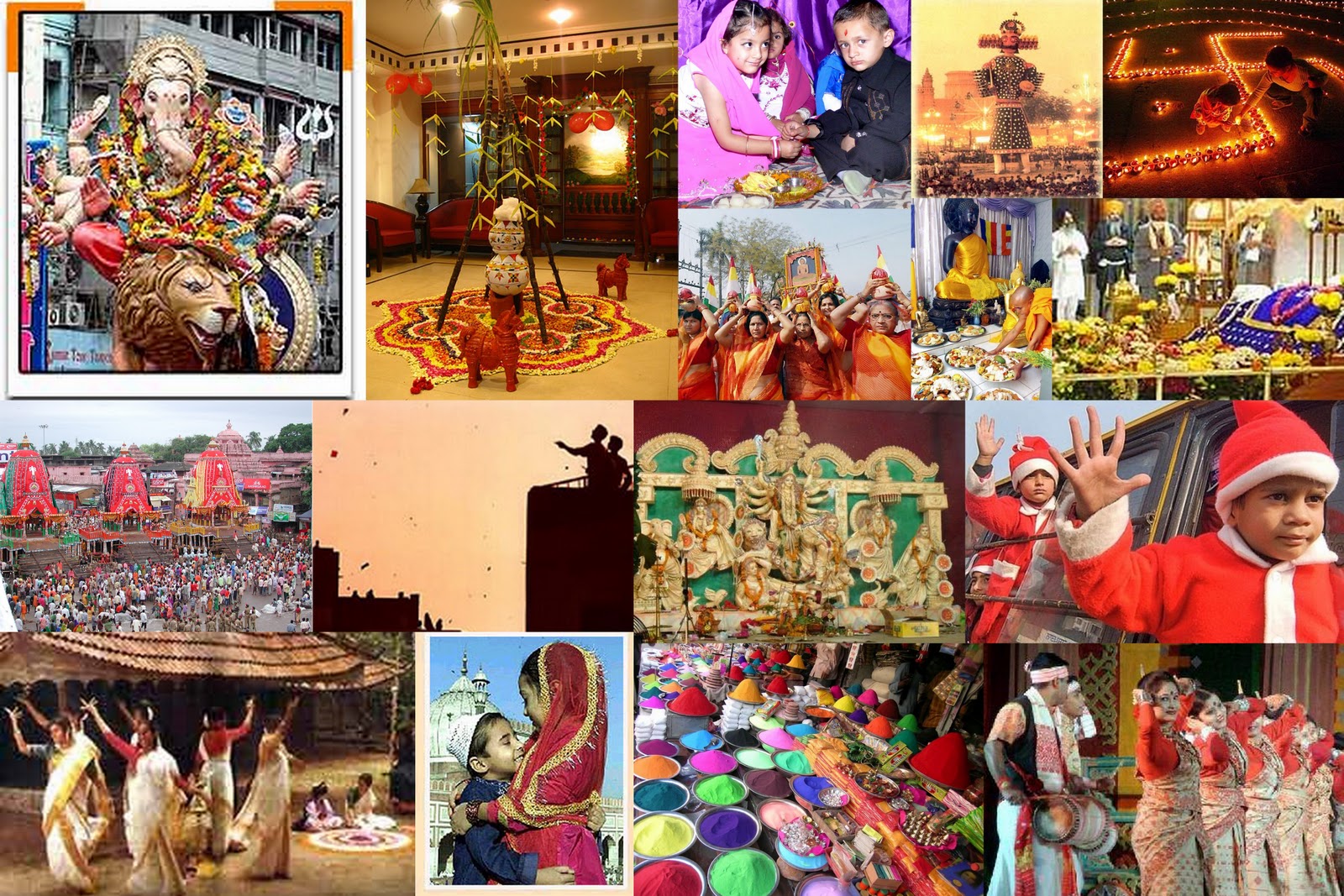India vs. America: 8 Things India Does Better Than The United States
When comparing two diverse and complex nations like India and the United States, it becomes clear that each country boasts its own unique strengths. While the United States is renowned for its technological innovations, economic prowess, and cultural influence, India’s legacy is equally impressive in areas that stem from centuries-old traditions, vibrant cultures, and resourcefulness. This article explores eight aspects in which India is often regarded as excelling—areas deeply intertwined with its history, people, and values. Read on as we delve into the intricate details of what makes India uniquely remarkable.
India vs. America: 8 Things India Does Better Than The United States 1. Culinary Diversity and the Art of Spices
A Feast for the Senses
Indian cuisine is synonymous with vibrant colors, aromatic spices, and a depth of flavor that has captivated palates worldwide. Unlike American cuisine, which is known for its fast-food culture and fusion trends, Indian food is rooted in tradition. Each region of India boasts its own distinct culinary style that reflects local ingredients, historical influences, and religious practices.
- Regional Variations: From the spicy vindaloos of Goa to the creamy kormas of the North, and from the tangy dosas of South India to the street food delights of Mumbai, every corner of the country offers a unique gastronomic experience. This regional diversity is not just about flavor but also about culture, heritage, and community stories passed down through generations.
- The Spice Symphony: India’s mastery over spices is legendary. Spices like turmeric, cumin, coriander, cardamom, and mustard seeds aren’t just ingredients; they form the backbone of Indian cuisine. These spices provide a rich complexity of flavor and are often celebrated for their potential health benefits. While American food sometimes leans on processed seasonings, Indian cooking embraces natural, whole spices that offer both taste and wellness.
- Cooking as an Art Form: Traditional Indian cooking is a meticulous process. Many recipes require slow-cooking methods that allow flavors to meld perfectly—a stark contrast to the convenience-driven culinary methods common in the United States. This patience and dedication to the art of cooking have given India an edge in creating dishes that are both deeply flavorful and culturally significant.
Beyond Taste: The Social Fabric of Meals
In India, mealtime is not merely about eating; it’s an event that brings families and communities together. The sharing of food is a celebration of relationships and cultural identity. The communal nature of Indian dining—often involving large family-style servings or the traditional thali (a meal served on a round platter with several dishes)—reinforces bonds and traditions in a way that is less emphasized in the more individualistic American dining culture.
India vs. America: 8 Things India Does Better Than The United States 2. Traditional Medicine and Holistic Health Practices
Ayurveda: The Science of Life
One of India’s most celebrated contributions to the world is Ayurveda—a holistic system of medicine that dates back thousands of years. Ayurveda is based on the belief that health and wellness depend on a delicate balance between the mind, body, and spirit. It employs natural remedies, dietary changes, and lifestyle modifications to promote overall well-being.
- Ancient Wisdom Meets Modern Demand: In recent years, as people worldwide seek alternatives to modern pharmaceuticals, Ayurveda has experienced a resurgence. Its emphasis on preventive care, personalized treatment, and natural remedies stands in contrast to the often one-size-fits-all approach of modern medicine prevalent in the United States.
- Holistic Approach: Ayurveda doesn’t just treat symptoms—it addresses the root cause of health issues. Through practices like herbal medicine, Panchakarma (detoxification), and daily routines tailored to individual body types (doshas), Ayurveda provides a compr ehensive approach to health that resonates with those seeking a more balanced lifestyle.
Yoga and Meditation: A Global Revolution
India is also the birthplace of yoga and meditation—practices that have transcended cultural boundaries and gained worldwide popularity. While the United States has embraced yoga as a fitness trend, India offers a much deeper, spiritual context.
- Yoga’s True Essence: Beyond physical exercise, yoga in India is a spiritual discipline that seeks to harmonize the body, mind, and spirit. The ancient texts like the Yoga Sutras of Patanjali outline philosophies that guide practitioners toward inner peace and self-realization.
- Mindfulness and Mental Health: Meditation, integral to the practice of yoga, has been proven to reduce stress, improve mental clarity, and foster a sense of well-being. The widespread adoption of mindfulness techniques in the West owes much to India’s ancient traditions. In a world that is increasingly fast-paced, the Indian approach to mental health—centered on inner balance and self-awareness—provides a refreshing alternative.
- Integration with Daily Life: In India, yoga and meditation are not merely practices confined to a studio or a weekend retreat; they are often integrated into daily routines. This continuous engagement with holistic health practices nurtures not only physical fitness but also mental resilience and emotional stability.
India vs. America: 8 Things India Does Better Than The United States 3. Cultural Diversity and the Spirit of Festivals
A Tapestry of Traditions
India’s cultural landscape is as diverse as its geography. With over 2,000 distinct ethnic groups and a myriad of languages, religions, and traditions, India is a living mosaic of cultural diversity. This diversity is most evident in the country’s festivals, which celebrate life, nature, and the divine.
- Celebrating Pluralism: Festivals like Diwali, Holi, Eid, Christmas, Navratri, and Pongal are celebrated with equal fervor, reflecting the country’s commitment to pluralism and inclusivity. Each festival has its own significance, rituals, and legends, yet all are united by a common spirit of joy, gratitude, and community.
- Vibrancy and Unity: The sheer vibrancy of Indian festivals is unmatched. Streets come alive with lights, music, dance, and color. These celebrations are more than mere events; they are a testament to the resilience and unity of a nation that, despite its diversity, finds strength in its shared traditions.
- Deep-Rooted Traditions: Festivals in India are steeped in tradition and are an expression of the country’s historical and cultural narratives. For instance, Diwali, the festival of lights, symbolizes the victory of light over darkness and knowledge over ignorance—a message that transcends borders and speaks to the universal human spirit.
Social Cohesion and Community Spirit
In India, festivals are not just about personal celebration; they are community affairs. Neighbors, friends, and even strangers come together to partake in the festivities. This collective participation strengthens social bonds and fosters a sense of belonging, which is sometimes less pronounced in the more individualistic and fast-paced culture of the United States.
- Rituals and Reunions: Traditional rituals performed during festivals reinforce familial bonds and cultural continuity. The act of gathering to celebrate, share food, and engage in collective prayers or dances creates lasting memories and solidifies community ties.
- Economic and Social Impact: Festivals also play a crucial role in India’s economy by boosting local markets, tourism, and small businesses. The cultural celebrations are intertwined with social and economic activities that help sustain local communities.

India vs. America: 8 Things India Does Better Than The United States 4. Historical Legacy and Architectural Marvels
A Journey Through Time
India’s history stretches back thousands of years, and its landscape is dotted with remnants of ancient civilizations, majestic palaces, intricate temples, and forts that tell tales of bygone eras. The country’s architectural heritage is not only a source of pride but also an enduring symbol of its rich cultural and historical legacy.
- Ancient Wonders: From the rock-cut caves of Ajanta and Ellora to the iconic Taj Mahal, India’s monuments are architectural marvels that have stood the test of time. These structures are more than just tourist attractions; they are embodiments of artistic genius, scientific prowess, and cultural evolution.
- Diverse Architectural Styles: India’s architecture is as diverse as its people. The Mughal architecture, with its intricate carvings and majestic domes, stands in contrast to the Dravidian style of South Indian temples characterized by towering gopurams (gateway towers). This diversity not only reflects different eras and influences but also demonstrates India’s ability to assimilate and innovate across various cultural paradigms.
Preserving Heritage Amid Modernity
While the United States is known for its modern skyline and innovative infrastructure, India’s commitment to preserving its historical legacy is noteworthy. Despite rapid modernization, many cities and towns in India have managed to retain their historical charm and cultural identity.
- Adaptive Reuse and Preservation: In recent years, there has been a growing emphasis on restoring and repurposing historical sites. Initiatives to convert ancient forts into museums, heritage hotels, or cultural centers are examples of how India is successfully merging the old with the new.
- Educational Value: India’s monuments and historical sites are living classrooms. They provide valuable insights into the nation’s past, offering lessons in art, history, and even engineering. This reverence for history serves as a constant reminder of the country’s enduring legacy and inspires future generations to uphold and celebrate their heritage.
India vs. America: 8 Things India Does Better Than The United States 5. Spirituality and the Quest for Inner Peace
A Sanctuary for the Soul
India’s deep-rooted spiritual traditions have influenced countless lives, both within its borders and around the world. Unlike the more secular approach in the United States, where spirituality is often separated from daily life, India embraces a holistic view that intertwines spirituality with everyday existence.
- A Hub of Ancient Wisdom: From the Vedas and Upanishads to the teachings of Buddha and Mahavira, India is a treasure trove of philosophical and spiritual literature. These texts have shaped not only Indian thought but have also had a profound impact on global spiritual movements.
- Pilgrimage and Sacred Sites: India is home to numerous sacred sites—Varanasi, Rishikesh, Bodh Gaya, and Tirupati, to name a few—where people come in search of solace, spiritual growth, and enlightenment. These places offer a tangible connection to ancient practices and provide a serene escape from the hustle and bustle of modern life.
A Living Tradition of Yoga and Meditation
As mentioned earlier, the practice of yoga and meditation is perhaps one of India’s most influential spiritual exports. Unlike in many Western adaptations where yoga is often reduced to physical fitness, the Indian approach emphasizes the union of body, mind, and spirit.
- Philosophical Depth: The spiritual teachings embedded within yoga—such as the concepts of dharma (duty), karma (action), and moksha (liberation)—offer profound insights into the nature of existence and the pursuit of inner peace. These teachings encourage self-reflection, mindfulness, and a deeper understanding of one’s purpose in life.
- Cultural Continuity: Spirituality in India is not confined to ritual or doctrine; it is a way of life. Daily practices, whether it’s the morning prayer rituals, the singing of bhajans (devotional songs), or the communal celebrations of religious festivals, ensure that spirituality remains an integral part of the national consciousness.
India vs. America: 8 Things India Does Better Than The United States 6. IT Outsourcing and the Talent Pool
A Global IT Powerhouse
When discussing technological innovation, the United States often takes center stage. However, India has carved out a formidable niche in the global IT landscape—especially in the realm of IT outsourcing and software development.
- Cost Efficiency and Expertise: India is recognized worldwide for its ability to provide high-quality IT services at competitive prices. The country’s large pool of skilled engineers, programmers, and IT professionals makes it a preferred destination for outsourcing projects. This blend of cost efficiency and technical expertise often gives India an edge in delivering software solutions and IT services.
- Educational Emphasis: The strong emphasis on STEM (Science, Technology, Engineering, and Mathematics) education in India has produced generations of highly skilled professionals. Prestigious institutions like the Indian Institutes of Technology (IITs) have become global symbols of excellence in technical education, contributing significantly to the nation’s prowess in technology.
Innovation Amid Constraints
Despite challenges such as resource constraints and infrastructural hurdles, India’s IT industry continues to thrive through innovation and resilience.
- Start-Up Culture: In recent years, India has witnessed a surge in start-up activity, with cities like Bangalore, Hyderabad, and Pune emerging as vibrant tech hubs. This dynamic ecosystem fosters innovation and entrepreneurial spirit, making India a hotbed for technological solutions that cater not only to local needs but also to global markets.
- Bridging the Digital Divide: The focus on digital transformation in India is not just about business—it’s also about inclusivity. Initiatives aimed at expanding internet access and digital literacy are empowering millions of Indians, fostering a more connected and tech-savvy society. This grassroots approach to technology adoption contrasts with the more commercialized digital landscape of the United States.
India vs. America: 8 Things India Does Better Than The United States 7. Cost Efficiency and Value for Money
A Unique Economic Advantage
India’s ability to deliver goods and services at a fraction of the cost compared to Western economies is a significant advantage. This cost efficiency is not merely a result of lower wages; it reflects a culture of resourcefulness, frugality, and innovative problem-solving.
- Affordable Services: Whether it’s education, transportation, or daily consumer goods, many services in India are available at lower prices without compromising on quality. This affordability extends to a wide range of sectors—from healthcare and pharmaceuticals (with a strong generic drug industry) to artisanal crafts and textiles.
- Economic Adaptability: Indian businesses often thrive in conditions of resource scarcity, finding creative and cost-effective solutions to everyday challenges. This entrepreneurial spirit has enabled many small and medium enterprises (SMEs) to flourish even in the face of economic adversity.
The Value of Traditional Practices
India’s cost efficiency is also reflected in its adherence to traditional practices that emphasize sustainability and frugality.
- Sustainable Living: Traditional Indian lifestyles have long embraced practices that promote sustainability—whether it’s through the use of locally sourced materials, natural remedies, or energy-efficient methods of cooking and construction. These practices not only reduce costs but also minimize environmental impact.
- Community-Based Economies: The concept of local bazaars, where goods are sold at fair prices and community relationships drive commerce, is another example of how value for money is interwoven into the fabric of Indian society. This contrasts with the more corporate and impersonal nature of modern American retail.
India vs. America: 8 Things India Does Better Than The United States 8. Community, Family Values, and Social Cohesion
The Strength of Togetherness
In many ways, the social fabric of India is built on the pillars of community and family. Unlike the often individualistic approach seen in many Western societies, Indian culture places a high premium on strong familial bonds and community support systems.
- Intergenerational Living: It is common in India for multiple generations to live under one roof, fostering an environment of mutual support and shared responsibilities. This close-knit family structure ensures that the wisdom and traditions of the past are passed down to future generations, creating a strong sense of continuity and identity.
- Social Safety Nets: Beyond the nuclear family, communities in India often function as extended families. Neighbors, friends, and local groups come together during times of need—be it for celebrating joyous occasions or offering support during hardships. This network of social cohesion can be a powerful safety net that offers emotional and sometimes financial support.
Celebrating Life Together
The communal approach to life in India is evident not only in family dynamics but also in the collective celebrations that define the culture.
- Festivals and Gatherings: As discussed earlier, festivals in India are a communal affair. The act of coming together to celebrate, share meals, and engage in cultural rituals strengthens the bonds among community members. This sense of belonging fosters an environment where people feel supported and valued.
- Shared Responsibilities: Community involvement extends to various aspects of life—whether it’s in local governance, social events, or neighborhood initiatives. This collaborative spirit helps in building resilient communities that can effectively address challenges together.
India vs. America: 8 Things India Does Better Than The United States Conclusion: Celebrating Unique Strengths
India and the United States are two nations with vibrant histories, diverse cultures, and unique strengths. While the United States has made indelible marks in technology, economic development, and global cultural trends, India shines in its deep-rooted traditions, community values, and a holistic approach to life. Here’s a brief recap of the eight areas where India is often seen as excelling:
- Culinary Diversity and Spices: The rich tapestry of flavors and regional variations in Indian cuisine, driven by the artful use of spices, offers a sensory experience that is both culturally significant and globally admired.
- Traditional Medicine and Holistic Health Practices: With Ayurveda, yoga, and meditation at its core, India provides a holistic approach to health and well-being that emphasizes balance, prevention, and natural remedies.
- Cultural Diversity and Festive Spirit: The country’s myriad festivals and celebrations reflect a vibrant cultural mosaic that promotes unity, inclusivity, and social cohesion.
- Historical Legacy and Architectural Marvels: India’s ancient monuments, palaces, and temples serve as timeless reminders of a glorious past, embodying artistic brilliance and historical depth.
- Spirituality and the Quest for Inner Peace: As the birthplace of numerous spiritual traditions and philosophical texts, India offers a unique pathway to inner balance and self-realization.
- IT Outsourcing and the Talent Pool: Boasting a highly skilled and cost-effective workforce, India has established itself as a global hub for IT services and technological innovation.
- Cost Efficiency and Value for Money: A culture of resourcefulness and sustainable living allows India to offer quality goods and services at affordable prices, fostering economic adaptability.
- Community, Family Values, and Social Cohesion: The strong emphasis on family bonds, communal living, and shared responsibilities creates a supportive social network that nurtures both individuals and communities.
In examining these facets, it becomes clear that India’s strengths lie not only in its economic and technological achievements but also in its rich cultural heritage and community-centric values. The Indian way of life—characterized by its emphasis on tradition, spirituality, and collective well-being—offers valuable lessons in resilience, inclusivity, and the importance of preserving cultural identity in an increasingly globalized world.
While comparisons between nations can often be subjective, acknowledging the unique qualities that define each country allows us to appreciate the diverse contributions they make to the global community. India’s legacy, woven through millennia of history, is a testament to its ability to adapt, innovate, and celebrate life in all its vibrant forms. As the world continues to evolve, these enduring qualities remain a source of inspiration for many, reminding us that the strength of a nation is measured not just by economic might or technological advancements, but by the richness of its culture, the depth of its traditions, and the resilience of its people.
In a rapidly changing global landscape, the example set by India in these areas serves as a powerful reminder of the importance of balancing progress with heritage, modernity with tradition, and individual success with community well-being. Both India and the United States contribute uniquely to the world, and by learning from each other’s strengths, there lies the potential for mutual growth, understanding, and a more harmonious global society.
Ultimately, celebrating these differences enriches our global tapestry, reminding us that excellence comes in many forms. India’s unique blend of ancient wisdom and contemporary ingenuity is one such form—a living legacy that continues to influence, inspire, and illuminate the path forward for generations to come.
By exploring these eight dimensions where India excels, we not only gain insight into the nation’s intrinsic qualities but also foster a greater appreciation for the diverse ways in which cultures around the world contribute to our collective human experience. Whether it’s the art of crafting flavorful meals, the enduring practice of holistic health, or the vibrant celebration of community life, India’s strengths offer valuable lessons and a reminder that sometimes, the beauty of a nation lies in its ability to remain true to its roots while boldly embracing the future.
India vs. America: 8 Things India Does Better Than The United States
Must Watch These
https://pram123.com/6-iconic-temples-in-india-you-should-visit-in-2025/
https://pram123.com/दुनिया-की-10-अत्यंत-अजीब-कार/
https://pram123.com/भारत-के-10-सबसे-लंबे-सुरंगों/
https://pram123.com/some-facts-about-dogs/
Want To Read More
India vs. America: 8 Things India Does Better Than The United States












[…] India vs. America: 8 Things India Does Better Than The United States […]
[…] India vs. America: 8 Things India Does Better Than The United States […]
[…] India vs. America: 8 Things India Does Better Than The United States […]